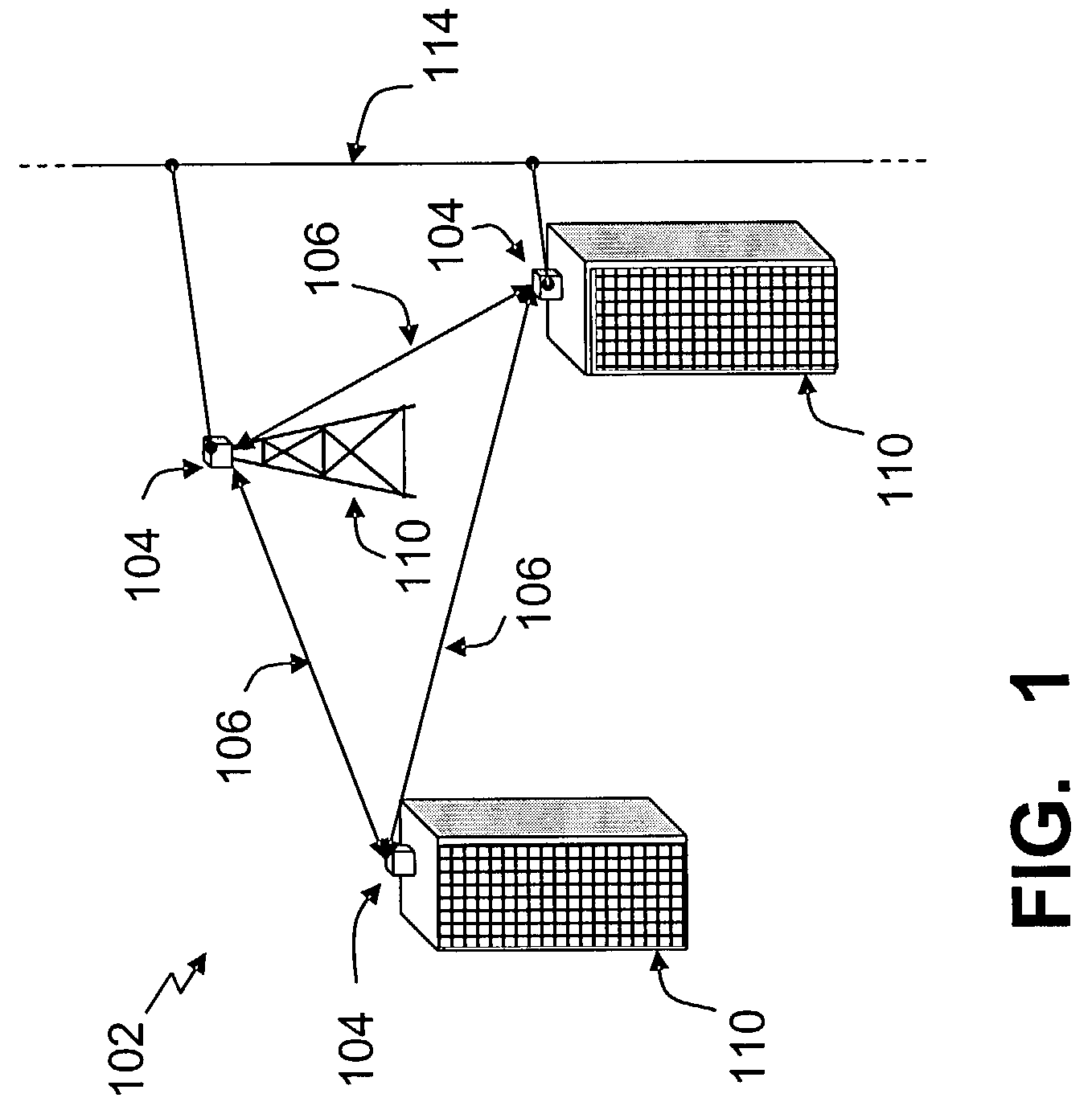Method and apparatus for maintaining optical alignment for free-space optical communication
a free-space optical communication and optical alignment technology, applied in the field of free-space optical communication, can solve the problems of physical installation of optical conductors, and achieve the effect of maintaining optical alignment and maximizing the first receive power
- Summary
- Abstract
- Description
- Claims
- Application Information
AI Technical Summary
Benefits of technology
Problems solved by technology
Method used
Image
Examples
Embodiment Construction
[0027]The following description is not to be taken in a limiting sense, but is made merely for the purpose of describing the general principles of the invention. The scope of the invention should be determined with reference to the claims.
[0028]A free space optical network is one in which high-speed network connectivity is achieved by modulating data onto a laser optical carrier and transmitting the optical information through free space to a receiver at some distance away. Free space networks provide communication at data-rates that are comparable to fiber optics data-rates while avoiding the cost and time associated with installing fiber-optic cabling.
[0029]FIG. 1 depicts a free-space optical communication network 102 according to one embodiment of the present invention. The network includes a plurality of link heads 104. Each link head comprises a transmitter, a receiver or both a transmitter and receiver (i.e., a transceiver). A link head 104 is optically aligned with at least o...
PUM
 Login to View More
Login to View More Abstract
Description
Claims
Application Information
 Login to View More
Login to View More - R&D
- Intellectual Property
- Life Sciences
- Materials
- Tech Scout
- Unparalleled Data Quality
- Higher Quality Content
- 60% Fewer Hallucinations
Browse by: Latest US Patents, China's latest patents, Technical Efficacy Thesaurus, Application Domain, Technology Topic, Popular Technical Reports.
© 2025 PatSnap. All rights reserved.Legal|Privacy policy|Modern Slavery Act Transparency Statement|Sitemap|About US| Contact US: help@patsnap.com



